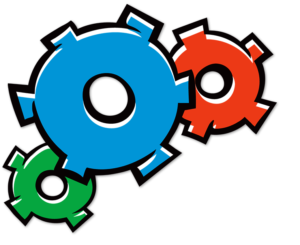Cerebral Palsy
What causes cerebral palsy (CP)?
CP results from abnormal development or damage to part of the brain that controls motor function. It causes abnormalities in posture, muscle tone and movement. CP impacts children differently, ranging from mild to severe.
Although most cases of CP are of unknown cause, certain risk factors have been identified. They include prematurity, bleeding in the brain, trauma, infection, complication during labour and delivery, and drug/alcohol abuse during pregnancy.
What are the symptoms of cerebral palsy?
Although each child may experience symptoms differently, there are some common representations.
As babies grow older they will often begin to show delays in meeting developmental milestones or have poor motor control.
Over time, and as children grow, the muscles may become stiff, especially in the arms and legs. This is called spasticity. Please read the section on spasticity for more information.
Children with CP may also have additional health conditions such as seizures, strabismus (when eyes point in different directions), respiratory issues, bladder/bowel problems, bone abnormalities, hearing or speech issues and learning disabilities.
How is cerebral palsy diagnosed?
The medical team makes a diagnosis of CP with a complete and thorough physical. Although symptoms may appear early, diagnosis is typically made at one to two years old. Doctors may use diagnostic tests such as an MRI of the brain, an x-ray of the spine or body, EEG, blood tests and gait analysis to help with diagnosis. Gait analysis is a specialized test of how the child walks.
Important terms for CP diagnosis
- Diplegia: either both arms or both legs affected
- Hemiplegia: limbs on only one side of the body affected
- Quadriplegia: all four limbs are impacted
- Monoplegia: one limb is affected
- Triplegia: three limbs impacted
Types of cerebral palsy
- Spastic cerebral palsy is the most common type of cerebral palsy.
It causes the muscles to be stiff and tight. - Athetoid (or dyskinetic) cerebral palsy is characterized by
uncontrollable movements. - Athetosis is characterized by slow, uncontrollable movements of the hands, feet, arms, or legs.
- Chorea causes abrupt, irregular, jerky movements.
- Choreoathetosis is a combination of the two above conditions.
- Dystonia causes slow rhythmic movements with muscle tone and postures abnormalities.
- Ataxic cerebral palsy affects balance and depth perception. Persons with ataxic CP have poor coordination and walk unsteadily.
- Mixed cerebral palsy means the child has symptoms of two or more types of cerebral palsy.
Treatment of cerebral palsy
There is no cure for CP and goals of treatment are to minimize the complications and manage the symptoms.
A multidisciplinary health care team is involved to care for children with CP.
The Physical Medicine Clinic at The Glenrose Rehabilitation Hospital has specialized doctors called physiatrists who monitor children with CP closely and provide medical intervention, such as botox treatment. Surgical and non-surgical interventions are managed based on child’s specific needs.
Neurosurgical operative interventions for spasticity in cerebral palsy patients
After the medical treatment for spasticity in children has been exhausted, neurosurgeons may be asked to get involved in the management of your child’s increased tone.
Baclofen pump: When a higher dose of baclofen is required and the results cannot be achieved with oral medications, the team may consider using intrathecal baclofen. This means the drug is inserted into the spinal fluid around the spinal cord so that the drug can work directly on the spinal cord. A baclofen pump requires surgical placement of a hockey-puck-shaped pump into the belly. A line is threaded around the side into the spine. The pump allows for continuous delivery of baclofen. Doctors use an external programmer to change dosage. A baclofen pump requires refilling approximately two to four times per year using a simple needle insertion into the pump under sterile conditions. Baclofen pumps are an option for children who require a high dosage of oral baclofen and have side effects. Administering via a baclofen pump allows for a significantly lower dose, subsequently less symptoms while still having the positive effects of decreasing spasticity.
Selective dorsal rhizotomy: This is a procedure done for children with spastic diplegia who have failed maximum medical management for tone. Usually the procedure happens at the age of seven or eight and involves sectioning some of the sensory nerve roots that are important for the development of spasticity. It involves an operation in the lower spine so that the nerves can be accessed and selectively cut.
If your child has been diagnosed with CP, contact CP Alberta and CP Edmonton for assistance and guidance. Take a moment to review the resource section in this guide and find out what is available in the community for support.
Community Health nurses will offer you information on age-appropriate milestones during your immunization appointments.
Look at myhealth.alberta.ca for information on developmental stages for ages zero to six years.
GOOD TO KNOW: Find out more about education, therapies and research for children with neurological conditions at threetobe.org
Reference:
kidshealth.org/parent/medical/brain/cerebral_palsy.html; Disease and conditions, cerebral palsy from mayoclinic.org/diseases-conditions/cerebral-palsy/symptoms-causes/syc-20353999, reviewed on May 6, 2014.

